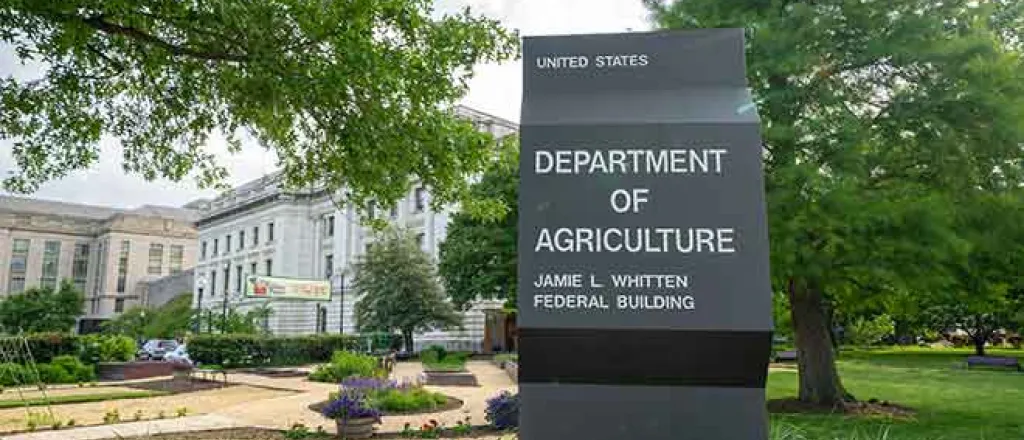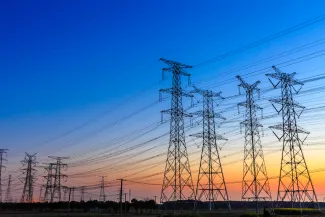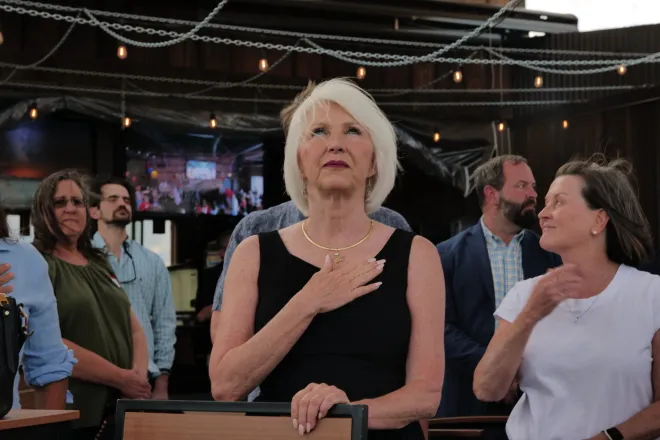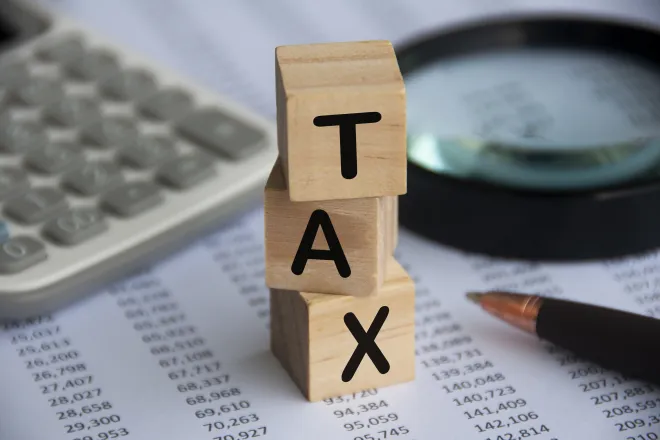
USDA Extends Deadline to Resubmit Rural Energy Proposals to ‘Align’ with Trump Administration Priorities
The U.S. Department of Agriculture has extended the deadline for thousands of rural energy program grantees, who’ve been promised funding totaling $10.8 billion, including $2.5 billion in loan subsidies, to resubmit their projects to align with President Donald Trump’s energy priorities.
In a March 25, 2025 announcement, Secretary of Agriculture Brooke Rollins notified recipients of the Rural Energy For America Program (REAP), Empowering Rural America (New ERA), and Powering Affordable Clean Energy (PACE) programs that “previously obligated” funding would be released to awardees.

© iStock
The same announcement also gave recipients 30 days to voluntarily resubmit proposals to refocus their projects on expanding American energy production while eliminating Diversity, Equity, Inclusion, and Accessibility (DEIA) and climate mandates embedded in previous proposals.
Those 30 days, set to expire at the end of April, have since been extended to the end of May. In the meantime, awardees express uncertainty around the future of their awards.
U.S. Representative Chellie Pingree, a Democrat from Maine’s 1st Congressional District, told the Daily Yonder she has received calls from constituents asking what to do to access their funding. The channels usually used by members of Congress to communicate with agencies like the USDA, she said, are closed under the Trump administration.
“Unlike in normal times, when you could call up the agency and say, ‘Hey, I heard from my constituent, can I talk to the government relations person and try to understand why their funding is being blocked,’ there’s none of that available to us,” said Pingree.
Delays, Uncertainty, and Ambiguity
Kevin Leavitt is a vegetable farmer in West Gardiner, Maine. After installing solar panels on his small farm in 2024 as part of a $140,000 project to generate efficient electricity, Leavitt was due to receive $48,000 in funding from REAP, which operates on a reimbursement basis. Leavitt’s reimbursement was supposed to arrive in late January 2025, after a standard month-long waiting period for the USDA to verify the project had been completed before authorizing the payment.
Instead, Leavitt’s check didn’t arrive until April.
Between January and April, Leavitt pursued multiple avenues to advocate for the money he was owed. He was in contact with the USDA, with his member of Congress, Representative Pingree, and with the press. By the time the money hit his account, Leavitt said the situation had taken its toll.

“Yeah, we got paid, but it cost me four months of talking to 30 different reporters and Congress members to get it to actually come back around,” said Leavitt.
During the time Leavitt was waiting for his reimbursement, he got an email from the USDA with a set of instructions for award recipients to follow in order to receive their funding.
A copy of the March 26 email obtained by the Daily Yonder gave awardees the voluntary opportunity to make changes to projects within their existing budgets to better address the Trump Administration’s January 20th Executive Order, titled “Declaring a National Energy Emergency.”
Changes outlined in the email include the removal of “harmful DEIA project features” as well as revisions to help awardees “play their part” in increasing identification, leasing, development, production, transportation, refining, and generation capacity of energy and critical minerals.
Leavitt was wary of the message to begin with. Then, he got a call from Washington, D.C. It was a staffer from Pingree’s office, where he’d been working to make his case for REAP funding to be released. The staffer advised Leavitt not to make any changes to his proposal, which, at that point, was for a project that had been completed for several months. Pingree said that, based on how funding cuts are playing out across the federal government, awardees who do decide to take climate and diversity language out of their proposals may not necessarily see funding for their projects approved again.
“There does not seem to be any guarantee that if you reapply, you will get it,” Pingree said. After the call from D.C., Leavitt resubmitted his proposal without changing anything.
“It sounded like it was a way to dupe people into getting screwed,” Leavitt said.
On the other side of the country, New ERA grantees just getting started on their projects had a different reaction to the USDA’s email.

© zhaojiankang - iStock-802436842
Wiley Freeman is the manager of member services at San Miguel Power Association, a rural electric cooperative in Colorado. In January, the co-op announced it had been awarded $9.8 million to build a 20-megawatt solar facility that would generate enough energy to power over 5,300 households annually. When completed, the solar project will help reduce costs for the co-op’s 10,000 members, who are also in a designated coal community, meaning they live with the impacts of a retired coal power plant and coal mine.
In March, the co-op was beginning its community engagement process, one of the first steps in the years-long project timeline that aims to have the solar facility hooked up to the grid sometime in 2028. When the USDA email arrived, Freeman said they resubmitted their proposal with no changes.
“This project really is compatible very much with the new administration’s goals for energy independence in rural America,” said Freeman.
An executive order titled “Unleashing American Energy,” released on the first day of the Trump administration, lays out the President’s energy goals. A subsection of the order focused on policy includes language about protecting the country’s economic and national security preparedness by “ensuring that an abundant supply of reliable energy is readily accessible in every state and territory.”
Applications for New ERA grants like the one San Miguel Power Association received are scored on a competitive basis. Funding is distributed to applicants with the highest scores, and not all applicants will receive awards in a given application cycle, which occurs on an annual basis for USDA programs.
The March 26 email sent from the USDA to rural energy funding recipients that was reviewed by the Daily Yonder said the USDA will not approve any changes that affect the scoring of projects that were competitively scored.
For now, Freeman said San Miguel Power Association is operating under the assumption that they will get the funding outlined in the January letter of commitment they received from the USDA. Through the New ERA program, co-ops like San Miguel Power Association are eligible to receive funding for up to 25% of their power purchase agreements, or contracts to buy energy from a third-party developer. In the case of San Miguel Power Association, the $9.8 million of New ERA money will come in the form of reimbursement for around 20% of the total project cost. The co-op will foot the rest of the bill.
Should San Miguel Power Association not get the funding it was awarded under the New ERA program, Freeman said the co-op wouldn’t be able to go through with the solar facility.
“It would be a devastating impact to this current project,” Freeman said. “This project makes sense economically with the help of the grant, and it does not make sense in its current form without the grant.”
Since resubmitting their New ERA grant application with no changes in April, Wiley Freeman and the rest of Colorado’s San Miguel Power Association are assuming business as usual. That same month, Kevin Leavitt’s reimbursement check cleared in Maine. By that point, he said he was jaded from months of uncertainty.
“Does it feel great? Not really. It kind of feels like a pity award,” Leavitt said.
A History of Bipartisanship
New ERA and REAP are two programs among a trio of rural energy programs administered by the USDA’s Rural Development division. The third, Powering American Clean Energy (PACE), had announced $1.4 billion in 40-60% forgivable loans as of January 10, 2025, to help rural communities across U.S. states and territories access low-cost clean energy.
Both PACE and New ERA were established in 2022 by the Inflation Reduction Act, a piece of legislation that worked to fulfill sweeping climate and clean energy goals set by President Joe Biden. The law authorized billions of dollars for energy programs in rural America to be spent over the next decade.
So far, most of the money from PACE, New ERA, and REAP has flowed or been awarded to Republican districts. Jeremy Fisher, a senior strategy and technical advisor with the Sierra Club’s Environmental Law Program, tracks how funding from the three programs breaks down between Republican and Democrat-controlled congressional districts.
Using publicly available data from the government website USASpending, Fisher found that $1.14 billion in forgivable PACE loans is going to projects in Republican-controlled congressional districts, while $205 million is going to PACE projects in Democrat-controlled congressional districts. While New ERA projects are more difficult to track cleanly along congressional district lines since electric cooperatives serve constituents across regional and even state borders, Fisher found there are 162 Republican-controlled districts and 41 Democrat-controlled districts where at least three zip codes are served by a utility that’s been awarded a New ERA grant.
An April 2025 study from the Brookings Institution, a think tank focused on policy research, found the same to be true for REAP, which has been around since 2008. Over its lifetime, more than two-thirds of REAP grants have gone to congressional districts currently held by Republicans, the study found. That includes a significant amount of investment over the past three years, where REAP obligated just over $1.5 billion in grants, or 68.5% of the program’s total spending over its lifetime, to awardees across rural America.
Tony Pipa is a senior fellow for global economy and development at Brookings and co-author of the study. He said that REAP is distinct from other USDA programs in that it is structured to provide money directly to farmers and small business owners.
The majority of REAP recipients are awarded grants under $50,000, according to the Brookings study. Pipa said that in rural areas, it can be difficult for small farms to access funding at such a small scale, since traditional finance institutions tend to offer larger sums of money for a higher return on investment. For funding smaller projects, like updating a water heater or installing rooftop solar, REAP fills the gap.
“You're meeting the needs and you're meeting businesses where they're at, rather than where you would hope them to be so that you can make a return on investment,” said Pipa. “I think REAP is really user-friendly in that way.”
While REAP is often grouped alongside the Inflation Reduction Act-era PACE and New ERA programs, its origins date back to the early 2000s. In 2002, Democratic Senator Tom Harkin of Iowa and Republican Senator Richard Lugar of Indiana, both members of the Senate Agriculture Committee, led an effort to include energy policy in that year’s Farm Bill.
Lloyd Ritter was senior counsel on energy and environment in the U.S. Senate at the time. In 2002, he worked on the bipartisan energy legislation, which was later named REAP by the 2008 Farm Bill.
“It was mainly about using energy development, both renewables and efficiency, as tools in the toolbox to save producers and small rural businesses money,” said Ritter.
The 2008 Farm Bill combined several renewable energy and energy efficiency programs from the 2002 Farm Bill and collectively named them the Rural Energy for America Program. By 2014, REAP was provided with a permanent funding baseline of $50 million annually. That funding was maintained in the 2018 Farm Bill. In 2022, the Inflation Reduction Act appropriated more than $2 billion to the USDA to provide grants and loans under REAP for disbursement through 2031.
Blocking funding for USDA programs that have already been approved and appropriated by Congress is illegal. Representative Pingree said it is unfair to ask REAP recipients to resubmit proposals for projects that have already been approved and, in cases like Kevin Leavitt’s, completed.
“These are farmers who don't have a lot of time to be writing a proposal and then rewriting a proposal,” Pingree said. “It breaks people's faith and trust in the United States government, and it goes against decades of history with the USDA where farmers considered it a trustworthy organization.”
This article first appeared on The Daily Yonder and is republished here under a Creative Commons Attribution-NoDerivatives 4.0 International License.

















